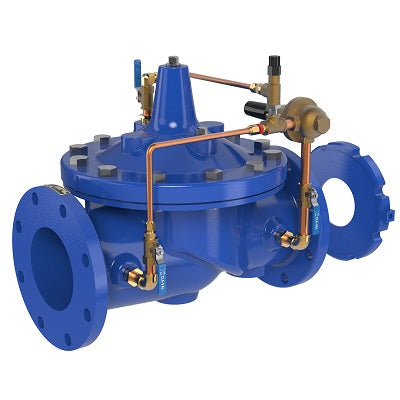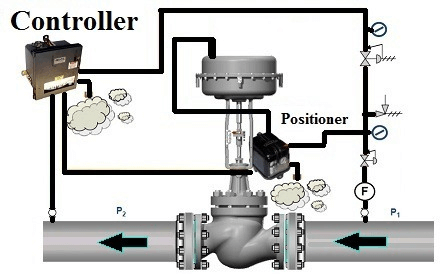Reliable Control Valves: Secret Parts for Effective System Administration
Reliable Control Valves: Secret Parts for Effective System Administration
Blog Article

Maximize Energy Cost Savings and Convenience With Advanced Building Automation Controls
In the realm of modern-day style and center management, the assimilation of advanced building automation manages stands as an essential development. By taking advantage of the power of automation, buildings can adapt, react, and develop in means that were once inconceivable.
Energy Efficiency Conveniences
Power effectiveness benefits can considerably reduce power consumption and functional costs in buildings. By implementing energy-efficient practices and innovations, building owners and operators can attain considerable financial savings while likewise adding to environmental sustainability. One of the main advantages of enhancing power effectiveness in buildings is the decrease of energy bills. Energy-efficient systems, such as innovative building automation controls, can optimize using resources like lighting, cooling, and home heating, causing reduced power costs in time.
Moreover, improved power performance can extend the life expectancy of building tools and systems. By operating more efficiently, heating and cooling systems, light, and other building components experience less damage, leading to decreased maintenance and replacement costs. In addition, energy-efficient buildings frequently regulate higher residential or commercial property worths and rental rates, giving long-term financial benefits to owners.
Moreover, energy efficiency can improve owner comfort and performance. Appropriately regulated interior environments with ideal lights and thermal problems produce an even more pleasurable and helpful work area, resulting in improved staff member fulfillment and efficiency. Generally, the energy effectiveness advantages related to innovative building automation controls are complex, incorporating cost financial savings, environmental stewardship, and owner health.
Boosted Convenience Control
Enhancing convenience control in building environments requires a sophisticated combination of innovative automation systems for optimal occupant health. By utilizing advanced structure automation controls, centers can tailor the indoor atmosphere to fulfill the certain requirements and preferences of residents. These systems allow exact policy of illumination, ventilation, and temperature level, creating a comfortable and productive environment. Owner complete satisfaction and performance are carefully connected to thermal convenience, making it important to have systems in position that can adjust to transforming problems in real-time.
By integrating these sophisticated controls, buildings can not just enhance comfort but likewise enhance power performance by maximizing system procedures based on real tenancy and usage patterns. Eventually, prioritizing resident convenience through sophisticated automation systems leads to an extra satisfying and much healthier indoor setting.
Operational Effectiveness Improvements

Moreover, the implementation of real-time monitoring and analytics tools enables building drivers to determine power inadequacies and operational anomalies quickly. By continuously keeping track of power use patterns and system performance metrics, modifications can be made in real-time to enhance power intake and ensure peak operational efficiency. control valves. In visit addition, including need feedback approaches right into structure automation controls can additionally improve functional effectiveness by dynamically readjusting power usage based on grid conditions and pricing signals
Indoor Climate Optimization
Effective interior environment optimization is a basic aspect of structure automation controls, guaranteeing residents' convenience and well-being while making best use of power savings. By utilizing advanced sensors and controls, developing automation systems can continuously monitor and change temperature, humidity levels, air top quality, and ventilation to create an ideal indoor atmosphere. Preserving comfy and constant conditions not only boosts passenger fulfillment yet also enhances efficiency and total well-being.
Interior environment optimization likewise plays a crucial role in power efficiency. By fine-tuning ventilation, home heating, and cooling systems based on real-time data and occupancy patterns, developing automation controls can dramatically minimize energy consumption - control valves. Executing methods such as demand-controlled air flow and thermal zoning can help minimize power waste while guaranteeing that each location of click here now the building gets the necessary conditioning.

Sustainable Setting Production
Structure automation regulates not only enhance interior environment problems for power effectiveness and owner convenience but also lay the foundation for developing a lasting environment with tactical monitoring of resources and systems. By integrating advanced building automation innovations, such as sensors, actuators, and intelligent software application, centers can adjust and keep track of energy use in real-time to decrease waste and reduce their carbon footprint. These systems make it possible for predictive maintenance, determining prospective problems before they rise and optimizing equipment performance to enhance long life and effectiveness.
Additionally, lasting setting production extends beyond energy administration to encompass water preservation, waste decrease, and indoor air quality improvement. Building automation controls can manage water use, identify leakages, and guarantee appropriate waste disposal methods, adding to general sustainability initiatives. In addition, by regulating and keeping an eye on air flow and filtering systems, these modern technologies boost passenger health and performance while reducing power consumption connected with HVAC procedures.
Verdict
Finally, advanced building automation manages offer considerable benefits in terms of power savings, comfort control, operational performance, indoor climate optimization, and developing a lasting setting. By carrying out these controls, buildings can attain optimal performance while decreasing energy consumption and improving occupant comfort. It appears that making use of advanced automation innovation is important in boosting structure performance and creating a much more lasting future.
Power efficiency benefits can significantly lower power intake and website link functional prices in structures. Generally, the power effectiveness advantages linked with advanced building automation controls are complex, including cost savings, environmental stewardship, and resident wellness.
In addition, incorporating demand response methods right into building automation controls can even more boost functional efficiency by dynamically changing energy use based on grid conditions and pricing signals.
Building automation manages not just maximize interior environment problems for power effectiveness and occupant convenience yet also lay the structure for creating a sustainable setting through calculated management of sources and systems.In verdict, progressed structure automation regulates offer substantial benefits in terms of energy financial savings, comfort control, functional efficiency, interior environment optimization, and developing a lasting environment.
Report this page